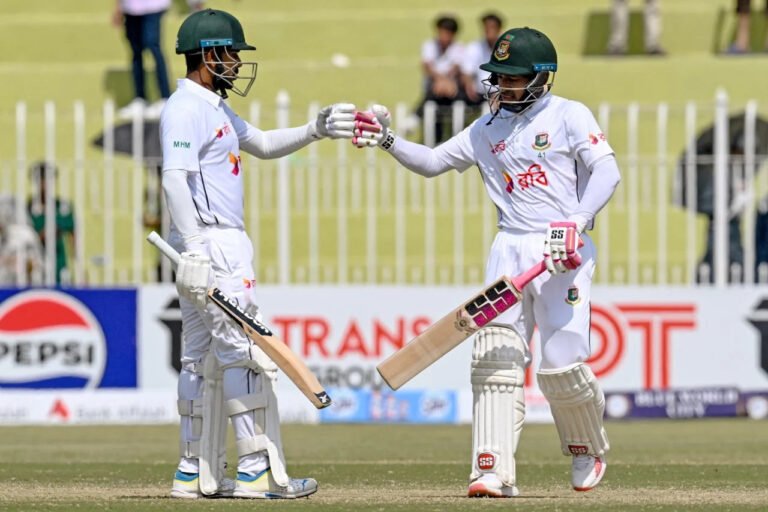New Zealand Secure First T20 World Cup Semi-Final Spot in 8 Years, Knocking Out Pakistan and India
New Zealand secured their first Women’s T20 World Cup semi-final position since 2016 with a commanding 54-run victory over Pakistan.
This result also ended India’s aspirations of making it to the last four. New Zealand took advantage of Pakistan’s mistakes, which included eight dropped catches, to advance to the semi-finals despite their modest score of 110/6.

Key Performances and Match Results
New Zealand 110 for 6 (Bates 28, Halliday 22, Sandhu 3-18) beat Pakistan 56 (Sana 21, Kerr 3-14, Carson 2-7) by 54 runs.
Match Analysis
For a moment India’s hopes rose. It’s possible that New Zealand will experience deja vu. Even Pakistan threatened to take unimaginable action. just to have everything collapse at the conclusion.
In their last group match, New Zealand defeated Pakistan to earn a spot in the Women’s T20 World Cup semi-final for the first time since 2016. When they batted first, they were only able to reach 110 for 6. In order to advance to the semi-finals, India required Pakistan to defeat New Zealand. In order to advance to the last four at the expense of New Zealand and India, Pakistan had to chase down the score anywhere between 11 and 13 overs. They were bowled out for 56, their lowest all-out total in T20 World Cups, in an attempt to accomplish this.
Pakistan’s bowling attack was spearheaded by Nashra Sandhu, who took three wickets to end New Zealand’s score. Though they had entered the game on the heels of a record ten-match losing skid, Amelia Kerr made a stunning comeback with three of her own, following Eden Carson’s strikes up top.
Suzie Bates appeared to have validated New Zealand’s choice to bat first when she hit the opening ball of the match down the ground to beat mid-off. After hitting a four off Fatima Sana in the same over, Georgia Plimmer and Bates split the difference at extra cover in the fourth over. Despite facing a somewhat larger number of dot balls, New Zealand looked good for more, having smashed five fours before the end of the first five overs.
A hint of what was to come only appeared when Omaima Sohail was brought on for the powerplay’s last over.
The game’s fifth over, Nida Dar’s first over, revealed her luck for the day. On the second ball against Dar, Bates tried a reverse lap but it was deflected to the wicketkeeper. Muneeba Ali, though, could not hold on. Pakistan lost five opportunities to score runs off Dar’s bowling alone, starting with that one. Bates trapped Sohail straight to midwicket in the sixth over, but Sandhu was unable to hold on. Plimmer had avoided being run out the ball before.
Plimmer and Bates failed to capitalize on those opportunities. Sana staggered before holding on as the former pushed a top edge off Sandhu into cover with New Zealand’s score at 41. Sandhu’s next over saw Bates smack a long-on ball straight to the throat. When Amelia Kerr was on nought, Sohail had grassed a tough caught and bowled chance, but he managed to cheaply have her caught at the deep midwicket boundaries.
Defined boundaries were elusive. Sophie Devine attempted, but was unable, to counterspin with her feet. When she was thirteen, she was also granted a life. In the final three overs, Pakistan failed to claim five wickets. Nevertheless, New Zealand was limited to a total that looked very reachable at the midway point and managed to score just seven fours, the last two off the bat of Brooke Halliday. Sandhu finished with a 3 for 18, and Sohail, Dar, and Iqbal each claimed one wicket.
Pakistan knew that in order to make the semi-finals, they would need to chase down the 101 runs needed in 12 overs. When they sent Aliya Riaz up to start the batting alongside Muneeba, it was obvious what their plans were. For the first time since 2014, Riaz has only ventured outside to start a T20I twice. She misplayed offspinner Carson to cover, so her stay was cut short at three balls.
Muneeba started off strong, first leaping down to loft Carson straight back and then, with the help of a misfield, hauling Lea Tahuhu through deep backward square leg. But Muneeba’s stumps were a mess when Tahuhu managed to get one to seam in, past the inside edge.
That marked the beginning of Pakistan’s catastrophic collapse. They were 28 for 5 after losing five wickets during the powerplay. Dar batted at number seven in a drastically altered batting order that did not produce the anticipated outcome.
Pakistan’s finest partnership came from Dar and Sana’s 24-run partnership for the sixth wicket. But as soon as their most seasoned all-rounder was out in the tenth over, Pakistan collapsed just as fast as New Zealand began. In 11.4 overs, they lost their final five wickets for just four runs—exactly the number of overs needed to finish the chase and qualify.






